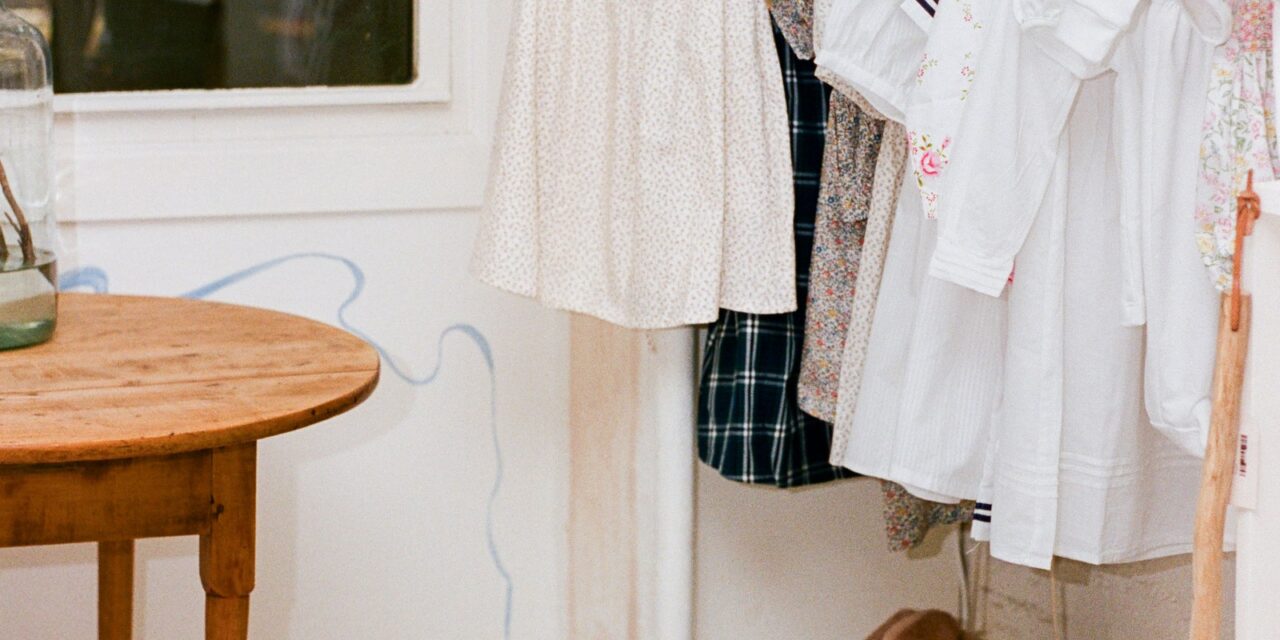Long before Salter House became Brooklyn Heights’ prime destination for families seeking a more natural and sustainable lifestyle, founders Sandeep and Carson Salter were just a couple of twentysomething creatives paying their dues in the East Village. Three years after starting Picture Room, a gallery that showcases the work of contemporary artists along with rare prints and framed ephemera, the duo manifested their “expression of our domestic life” through Salter House in 2017. Now, with two businesses—and a household of two daughters—to run, Sandeep and Carson have their sights set on Manhattan once more.
When the opportunity to return to the neighborhood with their family business in a storefront on the most iconic block presented itself, Carson and Sandeep couldn’t pass it up. “Having lived around the corner for such a long time it literally is familiar, I know what it’s like here and there’s a little bit of a homecoming for that reason which is nice,” Sandeep says.
Dating back to the 1900s, the former tenement building has a series of past lives from a headquarters for a revolutionary political group in the ’70s to the Russian music bar previously known as Anyway Cafe. “One of the things that we really loved when we cleaned up the space was this floor from when it had been a barber shop,” says Sandeep. “It’s lived so many lives and when you spend time in here, you can feel that. It’s this charming cellar spot that’s been a storefront for 200 years and has seen so many things.”
During the demolition period, which took nearly three months to complete, they uncovered original cobalt and white metro hex tiles from the 1930s underneath low-quality layers of linoleum tile, glue, and cement. “Once we saw that it changed our whole idea of what the space would look like and we just went with that,” Sandeep recalls. “There was already history here, we didn’t really need to try to impose an aesthetic on it.” This discovery informed their vision for the 450-square-foot space, which initially took design cues from the brick, metal, and stone features of Kettle’s Yard, an art gallery and house in Cambridge, England. Carson refers to it as “a wonderful example of a house-as-exhibition space, and the creative practice of collecting,” noting that they gravitate toward spaces like this that “are so personal and private, but also clearly reflecting a community style.”
Sandeep and Carson are very upfront about their lack of interior design experience, but coming from the art and book world, the couple’s process of collaboration usually begins with conducting research. The founders spent an extensive amount of time pouring over public library images of what the storefront looked like through the decades. “There wasn’t a concept or a really defined reference that we were trying to impose upon the space,” she explains. “I think a lot of people would’ve dry-walled everything and been like, ‘Let’s start from white box and upholster it.’ Although I would love to be that daring, Carson and I just really responded to what was already here.”
Pulling inspiration from the brick and plaster barrel-vaulted ceilings, Sandeep and Carson leaned into cellar aesthetics but with a warmer approach by intuitively weaving in historic textiles from shops like Sharktooth that “were not going to speak too loudly.” Sandeep emphasizes that these high quality, older finishes are meant to acknowledge the character of the space, which further supports their plan of peeling everything back and preserving the history. “We haven’t tried to introduce any new materials, it’s been a very light restoration,” she notes. “We just wanted to get it back to how it looked originally and to be really clear about restoring it in that way.”
While the intimate space needed a lot of love on the inside, there are several places that were intentionally left with bare plaster and naked brick so the layers would be visible. “Everything else was about cleaning it up and making sure that we also left some materials a bit raw so that you could see the space,” Sandeep explains. “We acknowledged that we’d put something into the space, and leaving it a little bit unfinished and visible was important to our way of approaching the space. We’re not trying to cover it up, we just want to give it some attention.”





